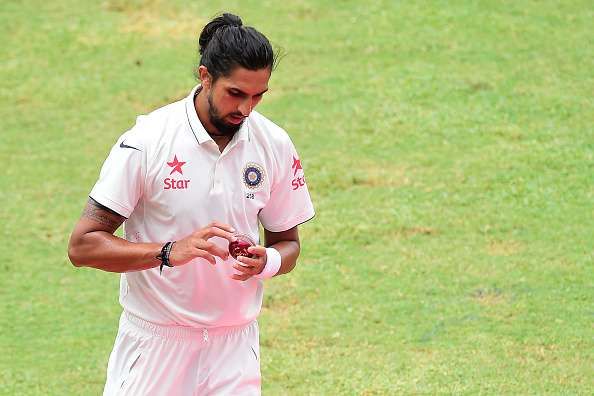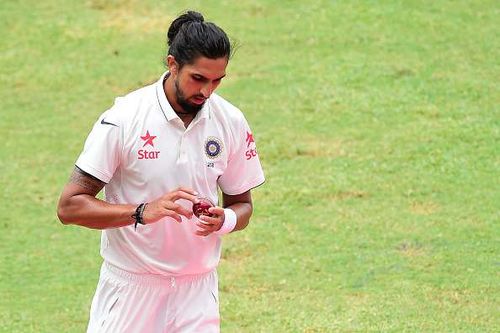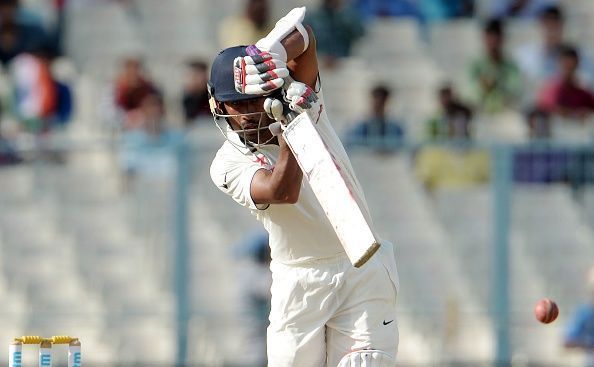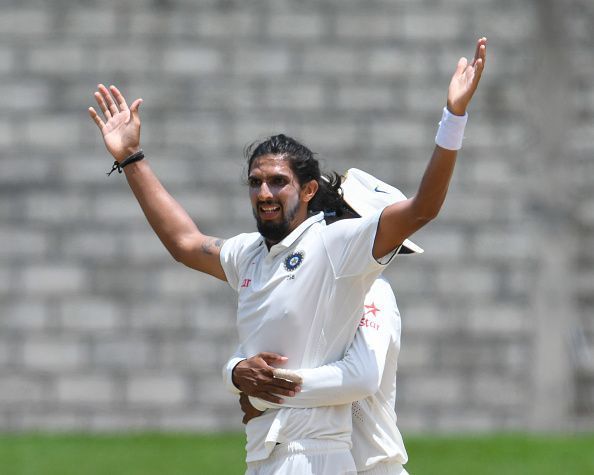
The resurgence of Ishant Sharma that laid the foundation for India's victory in Bangalore

On the fourth day of the second Test in Bangalore, Australia were in the driver’s seat after an incredible and action-packed first session, storming back into the game. Mitchell Starc and Josh Hazlewood broke the all-important partnership between Rahane and Pujara and then destroyed the lower order. India slipped from 238 for 4 to 258 for 9 in 24 balls and 22 minutes.
All this happened after the magnificent century-run partnership between Rahane and Pujara which allowed India to dominate Australia for the first time in the series. Then the new ball changed the fate of the contest. With nine wickets down and only 171 runs ahead, the Indians were pushed against the wall by the Aussies after some impressive bowling by them in the first session.
And then walked to the crease, India’s No. 11 batsman, Ishant Sharma. For Australia, it looked simple. A couple of deliveries to get Sharma’s wicket and then go for the chase. They were charged up, inspired and confident. Importantly, they had regained the momentum.
Video: India beat Australia at Bengaluru - The men who made it happen
But Sharma didn't want to go down without a fight. He negotiated the accuracy and variation from Hazlewood, looked at ease against the off-spin of Nathan Lyon and survived the left-arm spin of O'Keefe.
There was no glamorous batting. Ishant survived closely, got beaten often, kept the close-in fielders interested and had a few close shaves. Hazlewood got one to hit his pads and the LBW appeal was turned down and so was the review. The ball was half-hitting the leg stump and Ishant escaped narrowly.
In between his not-so-convincing defence, he swept Lyon for four and also got a few singles. At the other end, Wriddhiman Saha was tied down by clever field placing and accurate bowling, but still smoked Starc over mid-off for a four and hit a few runs.

The pair of Saha and Sharma didn’t score many runs; they added just 16 to the Indian total. But the runs did not matter; what mattered was they denied Australia any wicket for 58 balls. The 58 balls may not look like a big number, but considering what had happened prior to their arrival – when India lost five wickets in 24 balls, the game slowly tilted towards the hosts and frustrated their opponents.
And finally, the wicket arrived. Ishant tried an ambitious drive against O'Keefe but gave a simple catch to Shaun Marsh. He threw his head back, swung his bat in the air and expressed displeasure. Australia’s reaction, on the other hand, was more revealing. There were no wild cries, triumphant sprints or jumps. The Australians simply watched the catch being completed and started walking off the field. More than the joy of wicket, they were relieved to see Ishant walking back to the pavilion.
Extra Cover: India vs Australia, 2nd Test: 5 Talking Points
This was the impact of Ishant Sharma. He ended the momentum and by the time he got out, it was replaced with frustration for Australia. Smith and co. went to the pavilion not with the joy of getting six wickets in 36 runs but with the frustration of not knocking out the last pair for nearly 10 overs.
Ishant Sharma with his stay of 46 minutes erased the 22 minutes magic of Starc and Hazlewood.
After lunch, Ishant again stood at the crease, but this time with the ball in hand. He had only 187 runs in the bank and was faced up against David Warner, one of the deadliest opening batsmen in the game, and Matt Renshaw, a youngster with much promise and who had two fifties in last three innings. Although the pitch supported the Indian fast bowler, Warner, with his aggressive batting, could demolish the target in no time, while Renshaw had the skill to bat till eternity.

The job was clear. Get early wickets, prevent a flourishing start and make a match out of this target of 188 runs.
Sharma got Renshaw’s outside edge on the fourth ball but it fell short of slips. He started well, bent his back, hit the right areas and made Renshaw uncomfortable.
In the second over, he beat the young Aussie left-hander’s outside edge. The appeal for caught behind as well as LBW was turned down, but Renshaw looked seriously troubled.
The lanky Indian bowler continued the same stuff in the third over. From round the wicket, working on the angle, he made Renshaw play. He hit the proper length on that wicket and on the third ball got that extra bounce. The ball kissed Renshaw’s gloves and Saha completed the catch. The big wicket of Renshaw gave the hosts hope and the doors were wide open for India. Ishant did what he was asked to do – provide the breakthrough.
Extra Cover: Kohli hopes surface tension keeps India afloat in Ranchi
He then sent two outstanding overs to Steve Smith, the Australian captain who is regarded as one of the best Test batsmen in the world. He beat the outside edge, wrapped one on Smith’s pads, forced Smith to shuffle, and prevented him from settling down. His persistent and precise bowling allowed India to dominate and exert control.
Later on, Ashwin bowled his best spell of the series, Umesh took vital wickets and Jadeja kept things tight as India defended 187 with ease.
But all this happened after Ishant Sharma batted for 28 balls and bowled 36 accurate deliveries in his spell. The most experienced bowler of this Indian side did the most important work of sucking out the momentum and putting India in the driver’s seat.